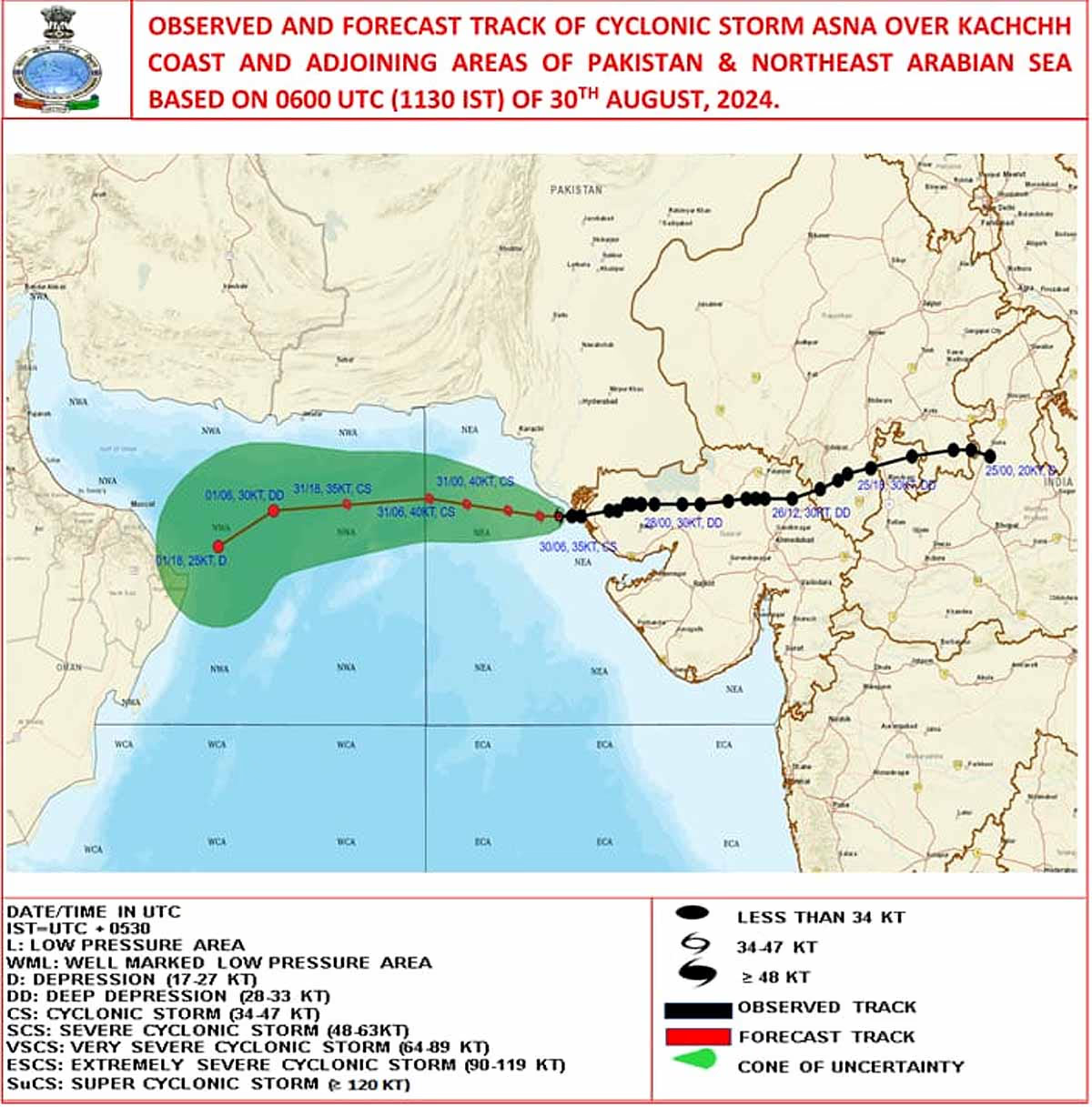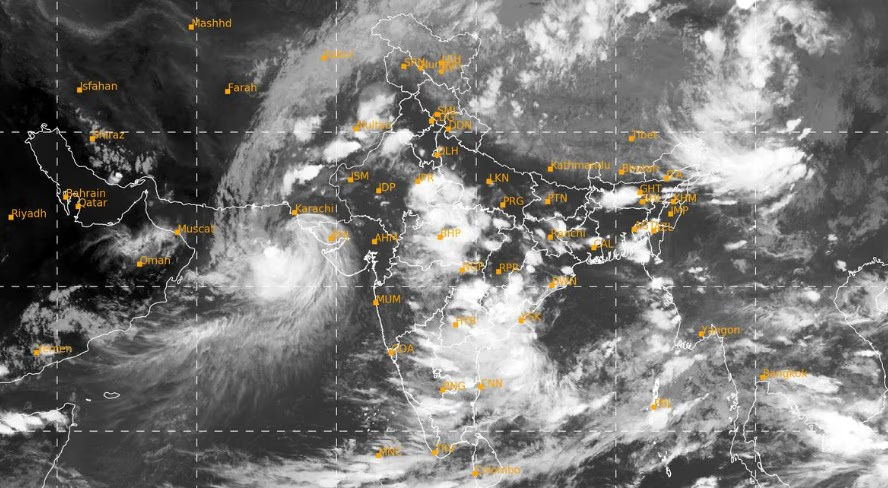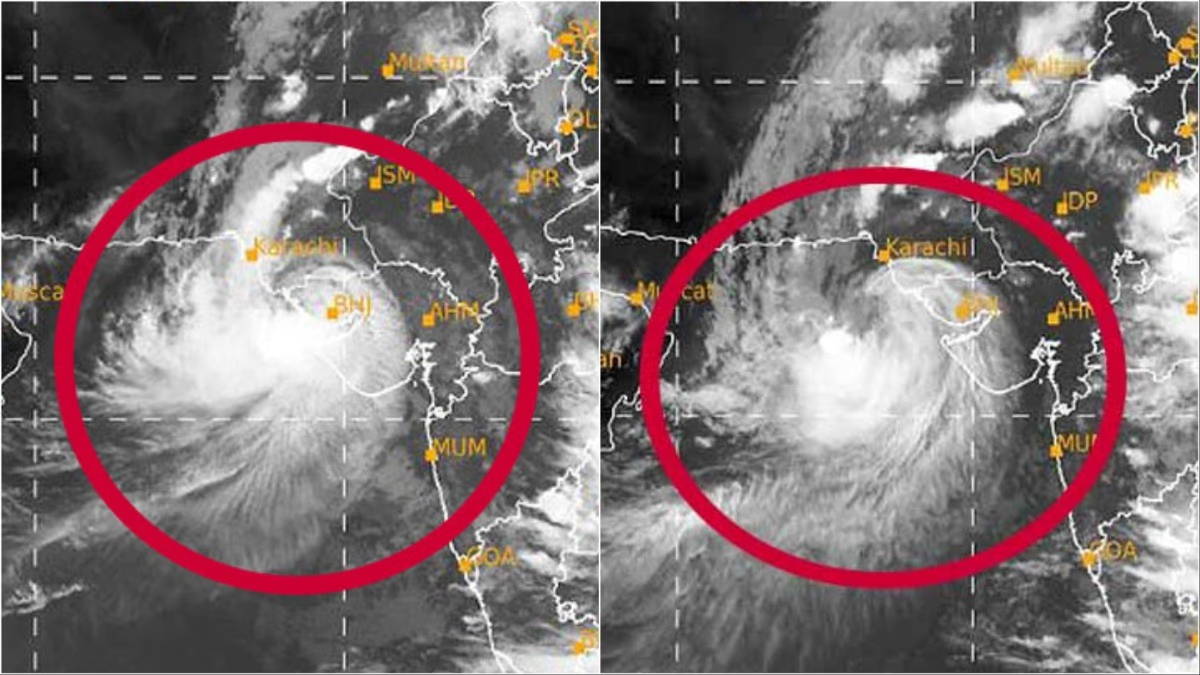An unusual weather system has developed near the Arabian Sea close to Gujarat, leaving scientists perplexed. Typically, cyclones form in the sea and move to land to bring rain. Here, the reverse is happening. Rainfall occurred over Gujarat's land due to a low-pressure system. This was followed by a deep depression in the Arabian Sea, which is now evolving into a cyclone named Asna.
This phenomenon is happening for the first time in 48 years since 1976, when a cyclone is crossing a significant landmass before heading back to the sea to form a cyclonic storm. The most surprising aspect is the timing of this cyclone. Generally, during the monsoon season, the sea temperature in the Arabian Sea hovers below 26 degrees Celsius.
Read More:
Cyclones form when the temperature exceeds 26.5 degrees Celsius, making the chances of cyclone formation after July and until September quite rare. The western part of the Arabian Sea usually remains cool during the monsoon season, with dry winds from the Arabian Peninsula. These conditions are typically unfavorable for cyclone formation.

Source: aajtak
Currently, Cyclone Asna is located 170 kilometers west of Naliya in Gujarat, 160 kilometers south of Karachi in Pakistan, and 430 kilometers east-southeast of Pasni in Pakistan.
This type of cyclone is uncommon this season
The current conditions are the complete opposite. Compared to the Bay of Bengal and the Arabian Sea, the western Arabian Sea experiences fewer cyclones since the conditions there are less favorable for the formation of cyclonic storms. For a cyclone to form, sea water needs to be 26.5 degrees Celsius warm up to a depth of 50 meters.
Read More:
More cyclones in the Bay of Bengal than the Arabian Sea
Historical data shows that the northern Indian Ocean, including the Bay of Bengal and the Arabian Sea, only produces around five cyclones annually. This accounts for merely 5-6% of the global average. The Bay of Bengal experiences four times more cyclones than the Arabian Sea.

Source: aajtak
Is this the result of global warming? The question arises
These cyclones are more commonly observed in the months of May and November. Madhavan Rajivan, the former Secretary of the Ministry of Earth Sciences, expressed his astonishment on his Twitter handle, stating that he is surprised by the system forming over the northern Arabian Sea. Traditionally, the northern Arabian Sea remains cool during this period. If a cyclone is forming there, it implies that the sea is warm, which is a result of global warming and rising local temperatures.
The occurrence of such cyclones raises questions about whether global warming is a factor. This requires investigation by scientists both nationally and internationally, to predict such rare events of a land-originated cyclone transforming into a sea cyclone in the future.




